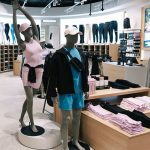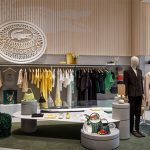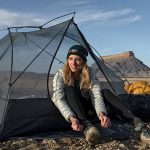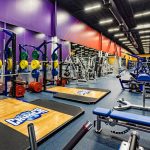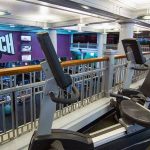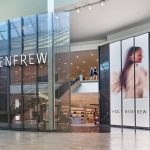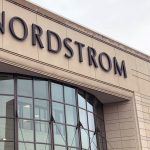Transition and opportunity may be the key words that best describe 2006 in the sporting goods industry as the momentum of mega deals slowed and companies looked for more nuanced deals to fine tune portfolios and add a final piece to the consolidation puzzle. We barely made it through the first month of the year before many realized that this would indeed be a very unique year.
While the Super Show acted as the backdrop nearly four years ago for the coming Gart/TSA deal that formed the first truly national sporting goods retailer, the news in January that The Sports Authority would go private in a $1.3 billion deal happened far away from the show floor. The buzz on the floor the first day of the show was expected to be about the last hurrah for a trade show that had once been the center of the industry, but the news quickly turned to the short tenure of the then rookie CEO at Nike Inc. as the company announced in the early hours of the first day of the show that Bill Perez was calling it quits as the companys chief exec. Throw in the fact that adidas acquisition of Reebok cleared the last regulatory and shareholder hurdles the same week, the demise of the Super Show quickly fell to the bottom of the news queue at the beginning of the year.
If all boats rise and fall with the actions of a particular company, then The Sports Authority created a tsunami on Wall Street for the sporting goods retail market at the start of the year and that momentum continued to outpace the general market for the balance of the year (see full chart). The deal, which was led by Green Equity Investors IV, L.P., an affiliate of Leonard Green & Partners, L.P. and included TSA's senior management team, was priced at roughly $1.3 billion in cash including assumed debt. The deal, which closed in May, gave TSA shareholders $37.25 a share, about a 20% premium over the share close prior to the deal announcement.
The move by TSA gave management more cover to make the changes it felt it needed to make to fix the business without Wall Street breathing down their necks. The move would also prove to be the first of a number of actions this year to take companies private in the sporting goods industry.
As for the change in leadership at Nike, Inc., the thirteen month tenure of Bill Perez as CEO now looks like just a small bump in the road for the company. Perhaps the biggest surprise was not that it happened so soon, but the fact that very few seemed surprised (or concerned). While Perez, who is an avid runner and appeared to fit in from that perspective, came from a family-owned company at SC Johnson, nothing could have prepared him for the deep cultural aspects of the Nike Inc. campus. While he worked carefully to move the company in the right direction to stake its claim as a global multi-brand corporation, there appeared to be some concern that he first had to understand The Brand, a mission that is very difficult to achieve without really living the culture inside The Berm.
Phil Knight said that despite posting record sales and earnings results, the company was operating at about 80% efficiency under Perez, stating that the distance between the Johnson business and NKE was just too great. Knight said he brought in Perez to coach and mentor the senior management team, but often found the team was spending too much time attempting to teach Perez the Nike way.
Mark Parker, formerly co-president of the Nike brand, immediately took the reins as president and CEO of Nike Inc. and never looked back. Charlie Denson was given sole responsibility for the Nike brand.
adidas-Salomon AG closed its acquisition of Reebok International Ltd. In February and quickly changed its name to adidas Group, which was expected to closely mirror Nike Inc., in the categories and sports it services. To Nike Bauer Hockey was adidas Reebok/CCM combination. For NKEs Cole Haan, adidas now has Rockport, and both companies have a solid presence with golf divisions. Through Reebok, adidas came to be the on field supplier for the NFL, NBA, and NHL. The NBA has already adopted the three stripes, while the industry waits and watches for word on what will become of the NFL and NHL deals. Will Reebok become Nikes Converse?
Erich Stamminger, adidas global marketing chief who was also serving as interim chief of the brands North America unit, was named president and CEO of Brand adidas, while Paul Harrington, who had been Reebok Inc.s SVP of international operations and chief supply chain officer, was named president and CEO of the Reebok brand, replacing Paul Fireman.
The merger, which was supposed to start paying dividends by the back-half of the year, was still raising questions as we enter this new year as the Reebok brand continues to struggle with its position in the marketplace. Hainer and the Reebok team believe they can reposition the brand under a performance umbrella, but the company continues to struggle with retailers pre-determined slotting for the brand, which just happens to be the weakest category in the market these days.
The transition in the footwear business was also one of the biggest stories of the year as the consumer voted in large chunks for product in the Fashion Athletic and Athletic Casual categories, primarily at the expense of the Classics category. Performance held its own and actually grew quite nicely at higher price-points in the mall and at all price-points at sporting goods. But the casual business shifted from the white-leather-foot-covering appeal of the Classics silhouette to the more Sports Culture silhouettes found in the Skate and Low Profile segments that have some athletic influence, but arent necessarily categorized as athletic footwear by many retailers.
While these major transitional issues had broad influence on the overall market, they also created opportunities for others and should open up even more opportunities going forward this year.
Though 2006 may have started off on the same foot as the two years before, the rest of the year was relatively tame as most companies looked for smaller tuck-in deals. Aside from adidas/Reebok, the only other mega deal for the year in softgoods came in the form of Berkshire-Hathaways deal to acquire Russell Corporation and its subsidiaries and roll them up under the Fruit of the Loom umbrella. FOL has moved quickly to move most back-end operational and sourcing functions to FOLs headquarters and reposition the RML business units as marketing companies. This invariably led to a major overhaul in the management team at Russell Athletic that saw former Pro Player CEO Doug Kelly take the leadership reins.
Speculation at the time of the deal had Buffett and crew selling off the accompanying hardgoods businesses in the Russell deal, but by the end of the year, nearly four months after the acquisition had finalized, nothing had happened. In fact, just the opposite seemed to be happening as Buffetts “deal with it quick” style seemed to be trickling down to the various Russell businesses. No where was it more apparent than in the Official NBA Ball saga between Spalding and the league. Rather than prolonging the agony and PR nightmare associated with players complaints about a new microfiber ball the league adopted at the beginning of the season, Spalding took quick steps once the league decided to move back to the old leather ball and even offered a refund to consumers and limited any risk to retailers. In the end, the synthetic balls, which made up a very small portion of Spalding basketball sales, continued to sell at retail in the lead up to Christmas.
The adidas/Reebok deal resulted in another transitional deal later out of the year as MacGregor Golf acquired the Greg Norman Collection business that had been part of Reebok, but had been merged into TaylorMade-adidas Golf. There is still talk that Rockport could be on the block, but it may stay as the companys foothold in the brown show category.
On the outdoor side of softgoods, Columbia acquired Pacific Trail in a bankruptcy auction. The deal opened up the mass market for Columbia, but it also caused the Moonstone brand to fade out of existence — at least for now. The deal has yet to bear any real fruit for COLM, but could in 2007. At the beginning of the year, Columbia also expanded its footwear portfolio with the acquisition of Montrail.
The largest deal of the year in the outdoor softgoods sector was put together by Silversteep Partners, an outdoor and active lifestyle-specific investment advisory firm. The company pulled Helly Hansen and Altor, a Norwegian private equity firm, together in a deal valued at an estimated $185 to $200 million.
While Timberland is rumored to be a take-over target by two industry behemoths, the company became a more active player in the acquisition game even as its core urban wheat boot business continues to struggle. The company is still doing an excellent job of transforming itself into an eco-conscious holding company. Deals executed by Timberland this year included acquiring the GoLite trademarks as well as Howies, a Welsh outdoor/action sports lifestyle brand that was built on environmentally friendly practices. There were reportedly several other investors looking at acquiring Howies and bringing the brand to the U.S.
Out of all the players in the consolidation of the hardgoods industry, most would agree that K2, Inc. started this most recent wave of blockbuster deals with the Volkl, Marker, and Marmot triple play in 2004. That deal was integrated over the course of 2005, and now it appears K2 has a bit of a head start on its competitors. In fact, the company may have already sent a signal that it is ready to begin on the war-path again with the acquisitions of Line, Karhu, and Sevylor this year.
Burton expanded its hardgoods offering and balanced its seasonality by acquiring Channel Islands Surfboards. Burton will also ship its first collection of action sports lifestyle apparel this year to be able to speak to its youth market year-round.
The biggest deal of the year in hardgoods, though, happened at the beginning, when Easton Sports was acquired by Riddell-Bell Sports for roughly $300 million to form Easton Bell Sports, a half-billion dollar holding company that is active in the bicycle, ski, snowboard, outdoor, and team sports markets.
Finally, to finish out the year, VF Corporation was in talks to acquire Eagle Creek in a deal valued at roughly $32 million to $36 million. The synergies are apparent with bag and luggage sourcing already in-place at VF through their JanSport and Eastpak brands. In addition, VF seems to have brands that do business in categories all around Eagle Creek, but none that are in direct competition.
In the last year, the major changes at retail occurred in the specialty stores. Gone were the big consolidator deals, instead replaced with smaller chains being acquired by bigger companies that needed the penetration either regionally or marketwise.
Dicks Sporting Goods dipped a toe into the golf specialty market with its planned acquisition of Golf Galaxy, which is expected to close in February this year. The recently-turned-public Golf Galaxy will benefit from the economies of scale that will come from ordering with the big box retailer, while DKS on the other hand will have a specialty store to feed its more discerning golf customers into, while also finding a new channel for distribution of its very successful private label brands in golf.
On the team sports side of things, Collegiate Pacific finally completed its acquisition of Sport Supply Group in November. A series of class action suits slowed the process, but BOO now finds itself with a large chunk of the team retail industry under its roof and hopes to pair its sales force with SSGs back-end strengths to help grow sales while improving margins.
And then theres Eddie Bauer, which emerged from bankruptcy under previous parent company Spiegel, became a public company for a few days, then was reacquired at a higher price by some of the very people, Catalog Holdings, which owns Speigel that owned the nameplate to start with.
Action sports retailer, Zumiez acquired the Texas-based Fast Forward chain, giving it an easier path to follow into the Lone Star state. Zumiez converted all of the 16 stores acquired to its own nameplate, but continues to work on product selection and margins.
Near the end of the year, Genescos Hat World announced its planned acquisition of competitor Hat Shack. Hat Shack offers Hat World an extension into the Southeastern U.S. as well as the simple removal of a competitor from the playing field.
Also at play in the mall was The Athletes Foot, which was acquired by Aether Holdings, who became NexCen Brands. NexCen looks to become a player in the sporting goods industry with original plans to pick up brands that could be sold through TAF, creating a vertical retailer. Plans didnt seem to be exactly on track, though, as the company announced its first acquisition after TAF, acquiring Bill Blass Holdings in December.
One of the most curious acquisitions at retail came from the hunting market where The Sportsmans Guide fell off SEWs quarterly radar as it was acquired by Redcats USA. This deal was curious because of the seeming disparity between the two companies. The Sportsmans Guide, a website dedicated to the hunting market, complete with monthly Ted Nugent columns, is now owned by Redcats, a catalog and online marketer of apparel and home products. The online and catalog words fit together, but that would seem to be about all.
Finally, The SportsOneSource Group, which publishes Sports Executive Weekly made some news of its own this year with the acquisition of SportScanINFO at the beginning of the year and the acquisition of the VNU Sports Business Media family of magazines and events, including Sporting Goods Business, Outdoor Business, Hunting Business, Sporting Goods Dealer, and several other events such as THE ELITE Running Specialty Conference, OB Outlook, and the SGB Forum. The deal accelerated SportsOneSources entry into the world of print publishing and created several synergies between research, online newsletters, and traditional print media.
| Market Report | |||
| Sporting Goods Industry — 2006 | |||
| Sector Index Performance* | |||
| Index | 2006 | 2005 | +/- |
| Industry | 1,490.16 | 1,273.87 | 17.0% |
| Footwear | 1,426.54 | 1,268.01 | 12.5% |
| Apparel | 1,505.32 | 1,252.71 | 20.2% |
| Hardlines | 1,358.79 | 1,290.43 | 5.3% |
| Golf | 1,577.04 | 1,524.04 | 3.5% |
| Spt Spec | 1,209.62 | 1,118.15 | 8.2% |
| Dept Stores | 1,290.03 | 1,204.62 | 7.1% |
| BOSS | 1,647.59 | 1,283.56 | 28.4% |
| S&P | 1,415.30 | ||

